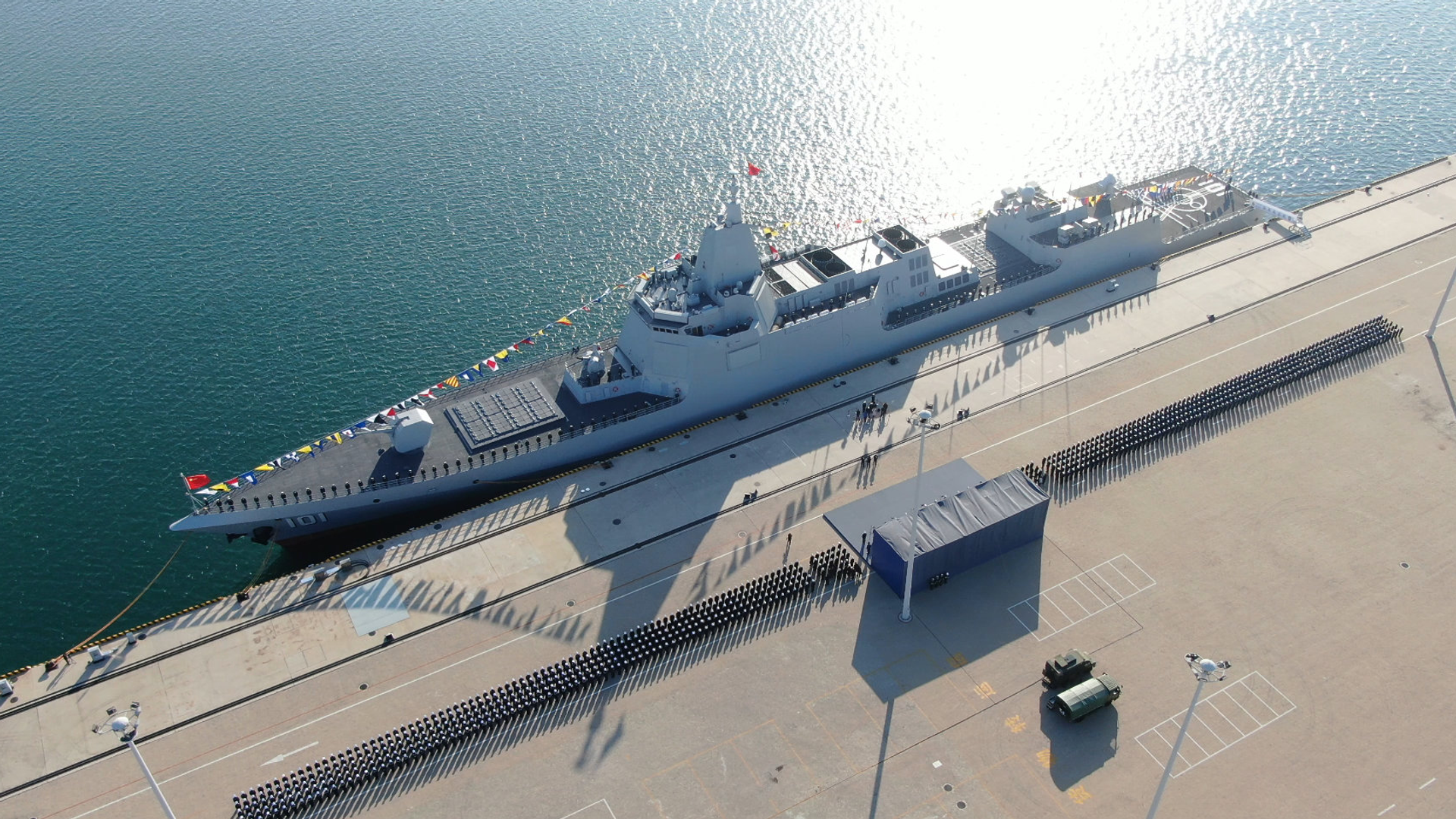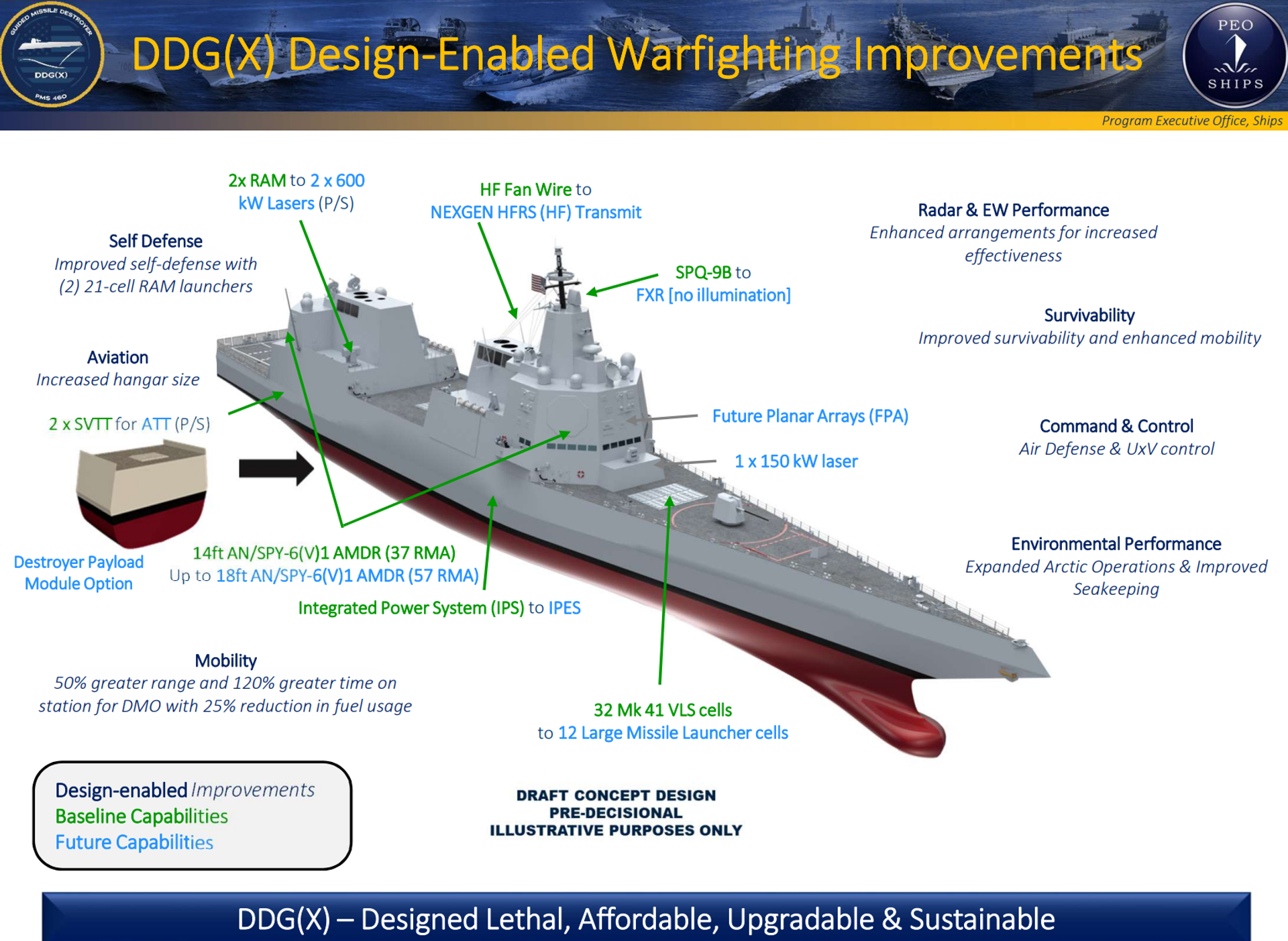Photos: US Navy’s Futuristic DDG(X) Destroyer Design Looks a Lot Like China’s Type 055 Warship
20:18 GMT 14.01.2022 (Updated: 20:03 GMT 19.10.2022)

© Sputnik Screenshot
Subscribe
One possible design for the US Navy’s next-generation missile destroyer was unveiled at a naval conference earlier this week. While the warship promises a slew of advanced weapons systems and radars, some have noticed its design is extremely similar to an already-existing ship: China’s Type 055 cruiser.
The US Navy has long sought a way to replace its aging Arleigh Burke-class destroyers, the oldest of which was commissioned in 1991. Before its 2010 cancellation, the CG(X) program aimed at that, but thanks to years of confusion about the Navy’s future, no replacement has yet emerged.
However, at the Surface Navy Association (SNA) National Symposium in Arlington, Virginia, on Wednesday, one possible configuration for such a ship was unveiled. The description is brief and vague, and it’s clear the artistry is mostly intended to showcase the many new features the Navy intends to develop for such a ship. However, that didn’t stop some from quickly noticing its striking superficial similarities to the Type 055 missile cruiser used by China’s People’s Liberation Army Navy (PLAN).
Type-055 https://t.co/UaIDk7GSdN
— H I Sutton (@CovertShores) January 12, 2022
#USNavy reveals early thinking for future destroyer DDG(X). Do you think it looks like a Chinese Type 055 destroyer? This time it is US 's turn to copy Chinese designs. 😎 pic.twitter.com/0HOo0bbrgz
— 彩云香江 (@louischeung_hk) January 13, 2022
Some of the similarities include the shape of its hull, a clipper bow with a bulbous protrusion, and forecastle, and the shape of its mast and superstructure.
There’s more than a little irony in the situation, too, since China has repeatedly been accused of stealing American designs for helicopters, fighter jets, AWACS planes, and other weapons of war, simply due to their superficial similarities to American equipment. In both cases, the similarities are likely attributable to the maxim “form fits function.”
So what, exactly, is the DDG(X)’s anticipated function?
The proposed design includes shockingly few offensive weapons: just 32 Mk 41 vertical launch system (VLS) tubes are included in the base design, with the potential to be upgraded to 12 larger cells for things like hypersonic missiles. By comparison, most Arleigh Burkes carry 96 Mk 41 VLS cells and the PLAN’s Type 055s sport 112 VLS tubes each.

Concept art for the US Navy's DDG(X) missile destroyer, showing its anticipate initial features and potential upgrades
© US Navy
The new Constellation-class frigates, intended for escort duties and electronic warfare, were also given 32 Mk 41 VLS tubes, which can carry the SM-3, SM-6, Tomahawk, Evolved Sea Sparrow, VR-ASROC, and Naval Strike Missile. However, the newest Arleigh Burkes will continue to be used alongside the newer vessels for decades, meaning the Navy’s firepower won’t suffer quite so much.
The DDG(X) is also expected to ship with one 150-kilowatt laser on the forecastle, likely a ramped-up version of one of the lasers the Navy has been testing for years, but which function more as a “dazzler” for optical systems than for interception. However, the Navy also anticipates being able to one day replace two sets of Rolling Airframe Missiles - short-range weapons for shooting down cruise missiles - with a pair of 600-kilowatt lasers for zapping down incoming missiles.
To power those lasers, the DDG(X) will get the powerful Integrated Power System (IPS) gas turbine engines used by the Zumwalts, each of which has enough output to power a small town.
However, no information about the DDG(X)’s anticipated dimensions was included, such as its length and water displacement, which are key to judging how it measures up to other warships.
In terms of radar, the Navy plans on starting out the DDG(X) with the AN/SPY-6 actively scanned electronic array (AESA) that most other newer surface ships have been given, although with an increased-aperture antenna almost 30% larger than the existing 14-foot array. The plan also calls for other standard systems, like the SPQ-9B fire control radar, to be upgraded to nonspecific future devices.


